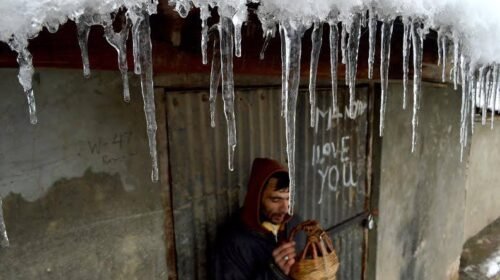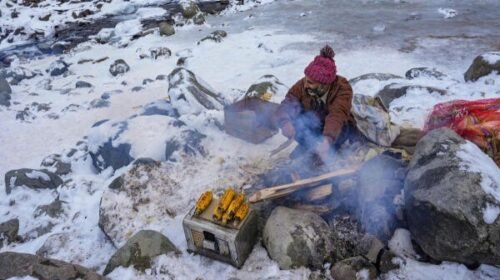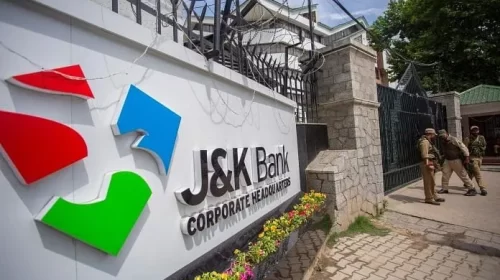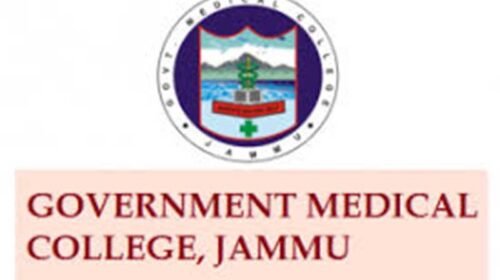A new report by Association for Protection of Civil Rights (APCR) has revealed that at least 3,000 people were illegally arrested by Uttar Pradesh police for taking part in protests against the Citizenship Amendment Act and many of them remain in jails under fabricated charges, even after more than two years since the anti-CAA protests began.
Most of them who were targeted by BJP government are Muslims, Maktoob Media reported quoting the APCR report.
The report said that an estimated 350 First Information Reports (FIRs) were registered regarding anti-CAA protests against around 5000 named individuals and over 100,000 unknown persons, which gives a free license to the state police to implicate any person in these cases and subject them to unnecessary harassment without any fault.
The civil rights advocacy group compiled the report titled Struggle for Equal Citizenship in UP and its Costs: A saga of omnibus FIRs, loot, arrests and harassment of Muslim minority that showcases the Uttar Pradesh state government’s treatment of the peaceful anti-CAA protesters. In 2019, there were nation-wide demonstrations against the CAA, an Act that was viewed as deeply communal because though it allowed Indian citizenship to be granted to persecuted Hindus, Sikhs, Buddhists, Jains, Parsis or Christians from Afghanistan, Bangladesh and Pakistan, it did not extend the same benefits to Muslims.
| Install Our App | DOWNLOAD |
| Join Telegram Channel | JOIN NOW |
| Join Facebook Group | JOIN NOW |
| Subscribe YouTube Channel | SUBSCRIBE |
| Follow On Twitter | FOLLOW |
| Follow On Instagram | FOLLOW |
Meanwhile, states that had governments led by the Bharatiya Janata Party (BJP) called for a massive crackdown against these protests. “However, police action carried out in Uttar Pradesh was unprecedented. Lives were lost. Properties were destroyed. Protestors and bystanders were tortured, arrested. Many are still incarcerated even after two years,” said the report prepared by Jamia Millia Islamia Research Scholar Safoora Zargar and student activist Asif Iqbal Tanha.
Using verified information available in the public domain, it estimated that FIRs had been filed against around 5,000 named individuals and over 1,00,000 unknown persons. About 3,000 people were illegally arrested, many of whom were from the Muslim community. The report alleged that the arrested people were put in jail under fabricated charges and remain there even now… two years after the nationwide protests.
Silencing Dissent
The report focused on the government’s attempt to crush dissent, the intensification of protests, and the violent suppression by the administration leading to the loss of at least 23 lives. Several others were tortured, detained, and harassed for the sole quality of being Muslims, said the report.
On December 18, 2019, the state administration served ‘caution’ notices to over 3,000 people, warning them against participating in the first all-India protest on December 19. Later, they were also formally arraigned in various FIR’s. Still, the police detained approximately 3,305 people from the protests that day. This number rose to 5,400 people after two days.
People were accused of violence and destruction of public property and called rioters. Testimonies showed how people were denied their fundamental rights to peaceful protest and assembly. Their houses and property were vandalised in a systematic manner, family members of the 23 people killed by gunshot wounds were harassed and intimidated.
In fact, the APCR said the government completely shirked away responsibility for these deaths, despite the presence of bullet injuries. It went so far as to accuse the state government of forged post-mortem reports and burials by the state police.
“Eight Special Investigation Teams (SIT’s) were set up; however no arrests have been made till now,” said the report.
Moreover, there was no attempt to investigate the police excesses and denial of fair compensation to survivors. According to the rights group, this highlights UP’s rapid regression into a police state. Over 500 recovery notices were issued across 10 districts for damages worth around ₹3.55 cr, without due legal process.
“This has caused protracted harassment and trauma to those who have been targeted,” said the report.
After two years, those people who were illegally arrested and tortured in prison also received the damages notice. Their families paid the receipts in the police station while their family members were incarcerated but the state police refused to return the amount after their bail.
“The report also brings out the sheer brazenness of the state machinery in its violation of almost all constitutional laws when crushing peaceful dissent. Till date there has been no accountability fixed for the same,” said the APCR.
23 Killed
Most of the 23 deceased in this incident were bystanders. They were largely daily wage labourers between 40 to 45 years of age, and the sole breadwinners of their families. However, there was one Mohammad Sageer in Varanasi who died at the young age of 8.
The school-going child was the youngest victim to have died in the stampede that followed the police lathi-charge at an CAA-NRC protest on December 20. As per the report, “Sageer was gleefully playing with his friends on the narrow bylanes of Dharara locality when a group of protesters came running to protect themselves from the lathi-charge set off by Uttar Pradesh police. Sageer was left choking and unconscious after getting trampled by the crowd. He was very critical by the time he was picked up and rushed to the hospital. The child, the youngest of four brothers, succumbed to injuries in a hospital on the same day.”
Similarly, Rampur’s Faiz Khan died on the same day after he suffered a bullet wound to his clavicle. Khan had joined the protesting crowd after taking his 14-year-old niece Samia to the hospital. Amidst the tear-gassing, the 25-year-old was trying to help an old man to safety.
Nine districts that reported such deaths, namely – Bijor, Firozabad, Kanpur, Lucknow, Meerut, Muzaffarnagar, Rampur, Sambhal, and Varanasi. Firozabad alone reported as many as seven deaths.
In terms of police action, Meerut’s belated scrap dealer Mohsin’s family said that the authorities refused to act or even register their complaint. On that day, Mohsin had gone to get extra fodder for the buffaloes just in case the markets shut down.
His family continues efforts to penalise those responsible for his death. At the time of the death, people recorded his lifeless body and showed his bullet wound. The bullet was stuck in the body but the post mortem report says that it passed through the body and came out from the other side. This small detail has ruined the case although the family alleged that the police told them, “We know he was killed by a police bullet but we won’t file your FIR. Do what you want to do.”
“The 23 people killed in UP are no less than martyrs, and they must be remembered as martyrs who laid down their lives in this struggle for dignity and for safeguarding the secular ethos of the country. All this inside a state that refused to accept them as their own, denied them dignity even in death, fell short of a two-yards plot for their burial and besmirched their memory through the mud even before the earth had set on their graves,” said the report.
Witch-hunt
Even after the killings, violence against the Muslim community persisted in the state. According to the report, the UP state government engaged in a witch-hunt to cover up police excesses and extrajudicial killings and systematic suppression of protests.
On December 11, the police filed FIRs against at least 21 named and 500 unnamed students for allegedly violating prohibitory orders. The Aligarh Muslim University (AMU) students joined by graduate and post-graduate degree students and research scholars, as well as school students had called for a hunger strike against the CAA and the National Register of Citizens (NRC), and held a mashal juloos (protest march with flamed torches) on the campus. Prominent student activists addressed the protesting students and registered their dissent against the discriminatory bill that was passed hurriedly and without any debate in the Parliament.
On December 12, rights activists Dr Kafeel Khan and Yogendra Yadav addressed the gathering. The next day an FIR was filed against Dr Khan but not Yadav under Section 153-A (promoting enmity between different groups on ground of religion). He was in jail for eight months.
Then on the day the amendment was passed in the Parliament on December 13, AMU students organised a march from the university to submit a memorandum to the local administration but the police intercepted them at the main gate. Prohibitory orders and section 144 were imposed and the internet was curbed. Around 700 students were booked for violating prohibitory orders, said the report.










